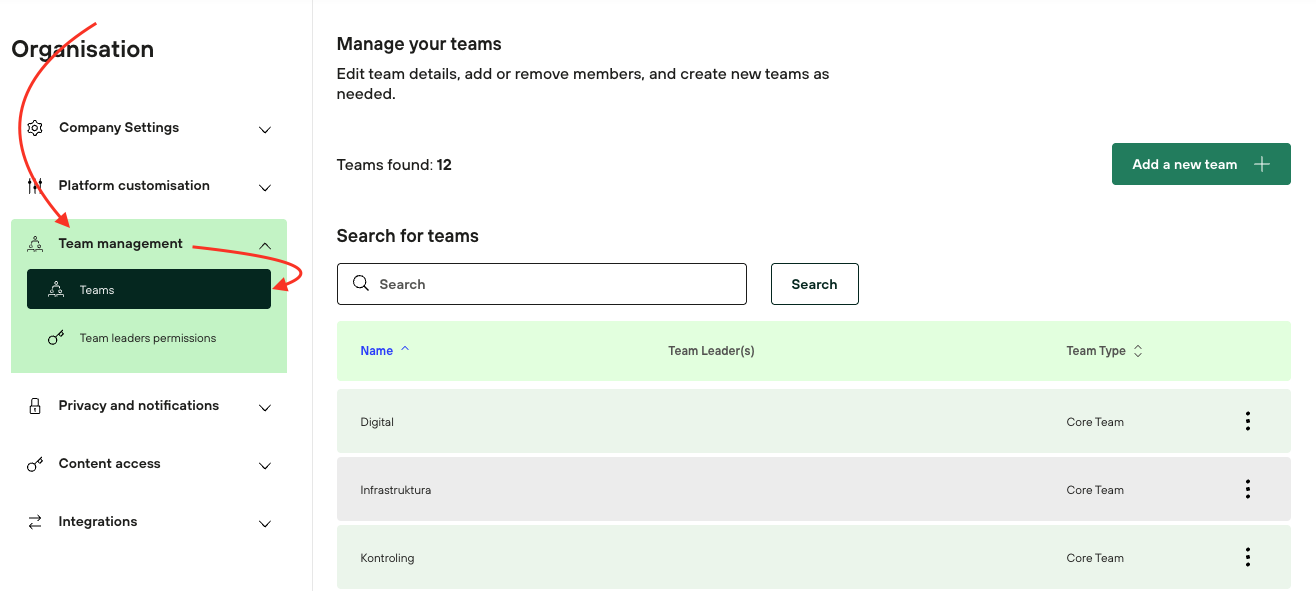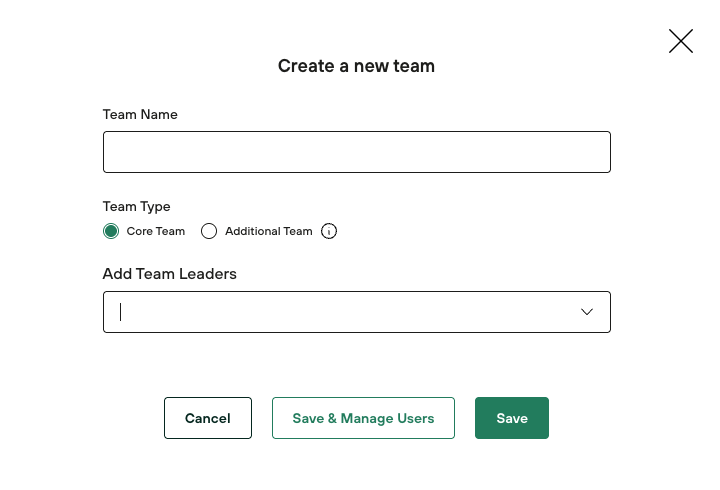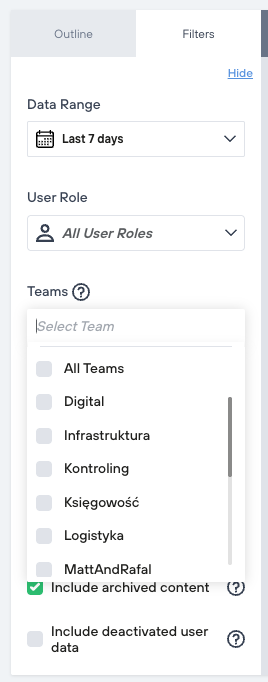How do Teams work?
Introduction to Core Teams and Teams
What changes have we made?
We know that every company is structured differently. To support your unique situation, we’ve implemented a new, flexible way of grouping, organising and managing users on SocialTalent.
Previously, SocialTalent had departments. Departments were great for organising large volumes of users, but there were limitations. Specifically, only one department could be applied per user and it was difficult to manage global, matrixes organisations.
Moreover, team leaders, who work with their teams every day, had low visibility and control regarding their team’s learning goals and performance. We have sought to empower team leaders, ensuring that each learner’s experience on SocialTalent is aligned with their career goals.
If you’ve been around for a while, this page will document recent changes. If you’re new to SocialTalent, this document will help you understand how to easily group users on the SocialTalent platform.
What user types exist on SocialTalent?
Before we discuss team types, let’s first outline the types of users on SocialTalent.
Learners:
a) Learners are the standard profile on SocialTalent.
b) They can view content, see leaderboards, view their activity feeds and engage in discussions.Administrators:
a) Administrators have super-user privileges and adjust company-wide privacy, security and content settings.b) They can report and change any user’s learning path. They can add, delete or edit user accounts.
c) We recommend a limited number of admins held by senior leaders or programme managers.
Team leaders:
a) Team leaders are assigned to manager Teams or “Core Teams” of learners.
b) They have the ability to report or change learning paths for learners within teams they manage.
c) A team leader can manage multiple teams.
How can I structure my organisation?
Now, you have the flexibility to structure your organisation in the way that suits you best.
In the above diagram, Jean lives in EMEA and is a member of both the Sourcing and Executive Search teams. The Team Leaders for Sourcing (John) and Exec Search (Sarah) can both change Jean’s Leaning Path and report on her progress.
Li, however, lives in APAC. It’s important that Li is part of the APAC core team as ACME company has different security regulations in that region.
Like Jean, Li’s also in the Exec Search team, however she’s not part of the sourcing group. Thus, Sarah (Exec Search) can report on her progress, but not John (Sourcing).
The next section will expand on the settings configurable by Teams and Core Teams.
Core teams
How many Core Teams can a user join?
Users must have membership within one ‘Core team’. Users cannot join more than one ‘Core Team’
What characteristics do Core Teams control?
Core teams define important user characteristics, including:
Leaderboards: Whether that user can see and be seen in leaderboards.
Reporting: Whether that user can be seen in reporting.
Activity feeds: Whether the user can see and be seen in activity feeds.
Community: The community of learners that the user can interact with via discussions and leaderboards.
What are Core Teams best practices?
Often, when companies turn any of the above features off, they do it based on geography. Therefore, we recommend that users apply “Core Teams” to specific geographical locations.
Other use cases could be “Core Teams” set up for various functions within your business. For example, you may want different “Core teams” for you hiring managers and recruiters.
Some examples of possible “Core teams”:
EMEA, APAC, LATAM
UK, Ireland, Germany, France
HR, Recruiting, Hiring Manager, Software Engineering
Teams
How many Teams can a user join?
Each user can be applied to an unlimited number of teams.
What characteristics do Teams control?
Teams do not adjust attributes but instead offer a helpful way of making reporting and content management more flexible.
Who can create teams?
Only administrators can currently create teams.
How do administrators interact with teams?
When comparing company-wide performance, Administrators can segment reports via Teams. Thus, they could compare the performance of both the “Sourcing” and “Executive Search” team, which could both contain members of the “EMEA” core team.
How do Team Leaders interact with teams?
Teams are managed by “Team Leaders”. We recommend “Team Leaders” to be line managers or senior individuals with mentorship roles. These team leaders will be able to run reports and adjust learning paths for anyone on their “Teams”.
What are teams best practices?
We recommend setting up teams related to job functions, business sub-units or experience levels.
Some examples of possible teams:
Recruiters, Sourcers, Executive Search
Technical recruitment, sales recruitment, legal recruitment
Early-stage recruiters, intermediate recruiters, executive recruiters
Leaders-in-training, new managers, senior managers, directors
Walkthroughs
How do I set up Teams and Core Teams?
Via your top navigation bar, go to “Admin → Organisation ”.

Go to Organisation → Teams Management and click the “Teams” tab.

Click “Add a new team” and you will be presented with pop-up window.

Pick something memorable for the team name. Then, pick whether you want the team to be a “Core team” or “Team”. Each user can only be part of one “Core Team”, but can be assigned to unlimited “Teams”.
Then, you can assign “Team Leaders” to manage the team. These “Team Leaders” will be able to report on these users, as well as change their Learning Paths.
Assigning new users to teams
When adding new users to the SocialTalent platform, you can use either our bulk uploader or single-user uploader. More about bulk upload can be found here.
How do I assign existing users to teams?
Go to “Admin → Users”.

Click on the three dots beside the chosen user. Click “Edit this user” and repeat the same process that you used to create a new user. You can assign a Core Team and an unlimited number of Additional teams.

Save changes.
How do I report on teams?
Go to reports, via your top navigation bar.
Click on “Detailed Reports”.
Click the “New Report” button at the top right.
Click on “Filters”.
Click the “Teams” dropdown and choose the teams or core teams that you want to report on:

6. Click “Save&run”
